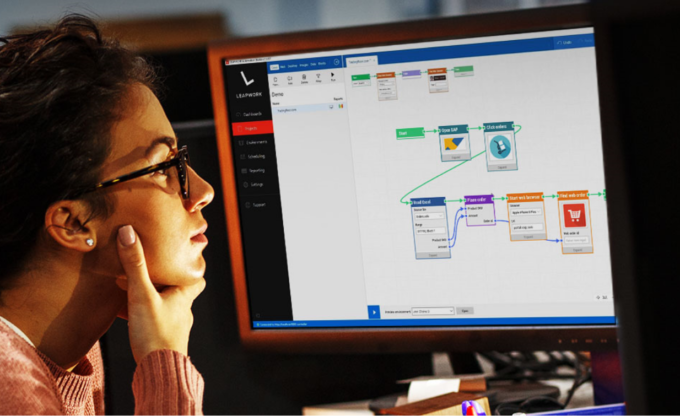Every year brings more digitalization to our world and more high-tech products. IT companies strive to create quality software that meets customer requirements. Quality assurance is the task of testing. But sometimes it causes a loss, like when testing delays a release. Fortunately, the parallel testing method solves this problem. How to do it correctly, we tell you in this article.
Basic information about parallel testing

Source: encora.com
Parallel testing is the practice when you test an application or its components against various combinations of operating systems, browsers, and their versions in parallel. This method reduces testing time without sacrificing the product and allows you to bring the release closer. Furthermore, parallel testing also helps you to check both interacting software components and those that are not related to each other.
With parallel testing, you run the same tests against multiple environments, on real and virtual devices. Through the automation capabilities, you speed up the testing process many times and save the project budget.
Let’s see how this works in practice. You develop software that should be available to users of Google Chrome, Safari, Firefox, Opera, and Microsoft Edge browsers and Windows, Linux, Mac, Android, and iOS operating systems. Everyone knows that both browsers and operating systems are updated quite often, which means we cannot limit ourselves to just one version of each of the popular browsers and only one version of each operating system. If you run all the tests sequentially, it will take many hours. Parallel testing reduces time costs by several times. For example, if you run several hundred of your tests on five parallel threads, their execution time will speed up five times compared to sequential execution.
Best approaches for parallel testing
zebrunner.com is the main parallel testing tool. It organizes a distributed network that allows you to run tests in parallel on multiple physical and virtual machines. This solution provides smooth scaling and does not require resources for configuration and maintenance.
Now you know the main secret of parallel testing! It’s high time to learn more about its useful practices.
1. Use cloud infrastructure

Source: networkerstechnology.com
Local-based infrastructure is becoming more and more obsolete every day. It ceases to meet the needs of companies since it requires significant financial and time resources to set up and maintain. At the same time, the effectiveness of the local infrastructure does not justify its cost. You will most likely run into scalability issues and not be able to cover major browsers, operating systems, versions of both, and variations thereof.
It is logical to test in parallel in the cloud infrastructure. By the way, at the time of writing this article, 60% of all corporate data in the world was stored in the cloud, Exploding Topics reports. And if we consider large corporations, then 90% of them have already implemented cloud infrastructure.
With a cloud solution, you have no scalability limits and no on-premise management costs. You just use the power of the tool and pay only for the time you use it.
2. Run autonomous test cases
Autonomous test cases are another basis for parallel testing. Due to the independence of tests from each other, you can easily distribute them in parallel threads and execute them in any order. In addition, the failure of one of the tests will not interfere with the execution of the others.
3. Prioritize test cases

Source: hygger.io
You do not need to run all test cases, anyway it is not possible to achieve 100% test coverage. Actually, maybe it is possible, but such painstaking work will require huge time and financial costs, and will also lead to a delay in the release. The goal should not be to achieve the maximum coverage but to detect all possible problems in the operation of critical functionality. In addition, it is important to test the components where the most complex code is concentrated. To achieve this, optimize and prioritize test cases.
4. Ensure thorough test data management
Parallel testing is impossible without quality management and a well-thought-out strategy. Compose it according to the following requirements:
- Test scripts should be written with the understanding that they will be executed in parallel. Otherwise, we will face the fact that the failure of one test case will cause a collapse when all or almost all tests fail (read point 2).
- Avoid hard code in test data as much as possible. Hard code makes tests interdependent and prevents them from running concurrently.
- Develop an effective test data cleanup strategy. The process should be set up so that all data generated during test runs is deleted at the end of testing.
- Ensure test scalability. Whether you’re using cloud infrastructure (preferably!) or on-premise, make sure you don’t run into performance issues. If you prefer to work in the cloud, then pay attention to how ready your tools are to scale. If you have an on-premises environment, make sure you have the required number of machines, as well as the resources to maintain them.
5. Execute quick tests first

Source: leapwork.com
Remember high school and university tests? Everyone knows that first of all you need to do those tasks that you know how to perform and complete quickly. The remaining time can then be spent looking for solutions to more complex and time-consuming tasks. As a result, the likelihood that you will pass the test for a passing score is quite high. In parallel testing, a similar approach is. By performing quick tests first, you get the first results faster and fix the bugs you find earlier. It is recommended to execute static tests first, then integration tests, and end-to-end tests.
6. Invest in a high-quality testing tool
A multifunctional test automation management platform Zebrunner provides full control over the QA process on a project. You get the most possible efficiency from parallel testing through access to a tool like Selenium grid. By reducing the time it takes to run tests directly, you speed up the release time without harming the quality of the product. The smart testing platform provides you with AI/ML failure classification, clear reporting, and statistics. Moreover, you can reach any real device for testing through a cloud device farm, get professional assistance, and set up a smooth QA process.







